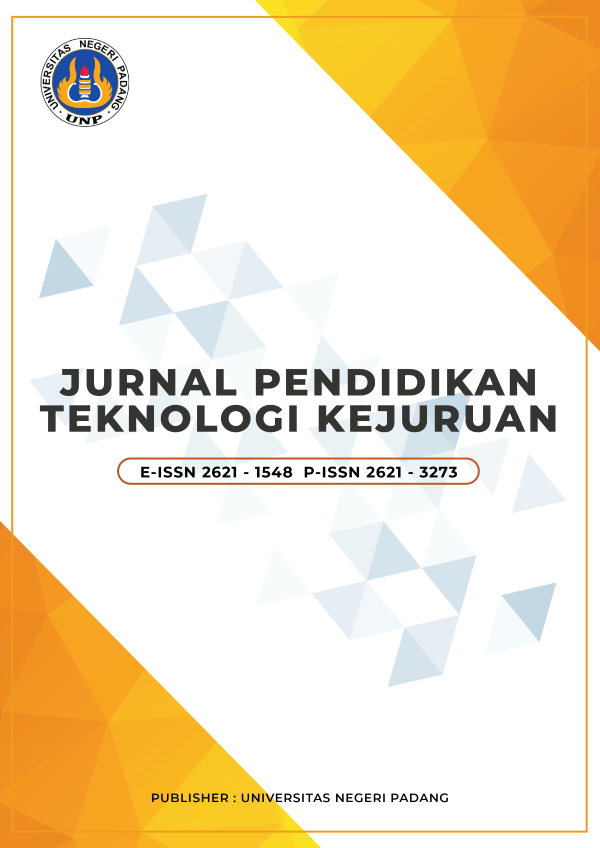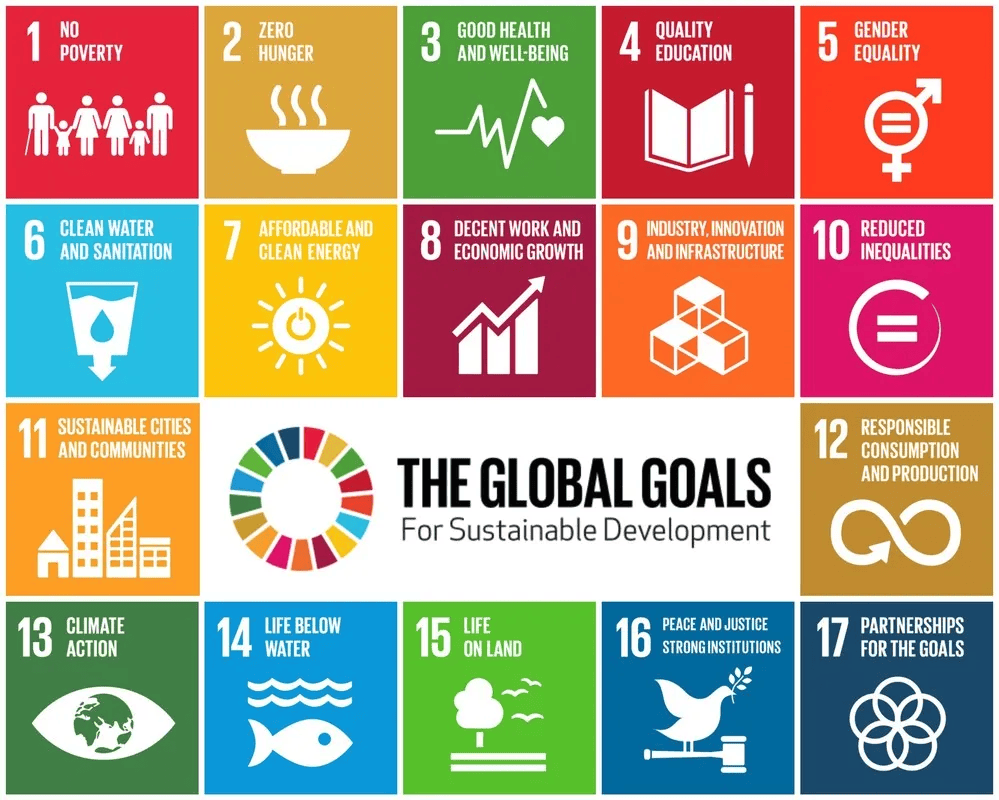Analysis of factors influencing students' participation in national and international competitions
DOI:
https://doi.org/10.24036/jptk.v8i1.42623Keywords:
National And International Competitions, Student Participation, Academic Motivation, Higher EducationAbstract
Higher education plays an important role in preparing students to become competent and competitive individuals. Furthermore, participating in academic competitions is a strategic means to foster innovative, collaborative, and competitive skills. This study employed Structural Equation Modeling (SEM) using Smart PLS (Partial Least Squares) software, a statistical technique suitable for analyzing complex relationships between variables. The analysis process involved two stages: measurement model and structural model. The analysis showed that the T-statistic for peer influence was 2.549, exceeding the threshold of 1.96, with a p-value of 0.011, below the 0.05 threshold for statistical significance. Similarly, the T-statistic for family influence was 3.803, also exceeding 1.96, with a p-value of 0.000, indicating a highly significant relationship. These findings highlight the important role of external factors, especially peer and family influence, in motivating students to participate in national and international competitions. Therefore, educational institutions need to implement targeted strategies to increase students’ motivation and encourage active involvement in these competitions.
Downloads
References
Ab Hamid, M. R., Sami, W., & Mohmad Sidek, M. H. (2017). Discriminant Validity Assessment: Use of Fornell & Larcker criterion versus HTMT Criterion. Journal of Physics: Conference Series, 890, 012163. https://doi.org/10.1088/1742-6596/890/1/012163
Abelha, M., Fernandes, S., Mesquita, D., Seabra, F., & Ferreira-Oliveira, A. T. (2020). Graduate Employability and Competence Development in Higher Education—A Systematic Literature Review Using PRISMA. Sustainability, 12(15), 5900. https://doi.org/10.3390/su12155900
Acut, D., & Antonio, R. (2023). Effectiveness of Science-Technology-Society (STS) approach on students’ learning outcomes in science education: Evidence from a meta-analysis. Journal of Technology and Science Education, 13(3), 718. https://doi.org/10.3926/jotse.2151
Anugraheni, T. D., Izzah, L., & Hadi, M. S. (2023). Increasing the Students’ Speaking Ability through Role-Playing with Slovin’s Formula Sample Size. Jurnal Studi Guru Dan Pembelajaran, 6(3), 262–272. https://doi.org/10.30605/jsgp.6.3.2023.2825
Bardorfer, A. (2024). Fostering Students’ Active Participation in Higher Education: The Role of Teacher-student Rapport. Athens Journal of Education, 11(3), 227–246. https://doi.org/10.30958/aje.11-3-4
Benitez, J., Henseler, J., Castillo, A., & Schuberth, F. (2020). How to perform and report an impactful analysis using partial least squares: Guidelines for confirmatory and explanatory IS research. Information & Management, 57(2), 103168. https://doi.org/10.1016/j.im.2019.05.003
Berig, F., Kulturel-Konak, S., & Konak, A. (2024). Exploring the Transformative Influence of Student Innovation Competitions and Programs: Insights from their Organizers. 2024 IEEE Integrated STEM Education Conference (ISEC), 1–6. https://doi.org/10.1109/ISEC61299.2024.10664769
Chauhan, S., Chauhan, K., Singh, S., Mahlawat, S., Kumar, V., & Singh, S. (2024). Analyzing family support mediating role between motivational factors and sustainable entrepreneurial intentions: A study on university students. Sustainable Technology and Entrepreneurship, 3(3), 100076. https://doi.org/10.1016/j.stae.2024.100076
Cheung, G. W., Cooper-Thomas, H. D., Lau, R. S., & Wang, L. C. (2024). Reporting reliability, convergent and discriminant validity with structural equation modeling: A review and best-practice recommendations. Asia Pacific Journal of Management, 41(2), 745–783. https://doi.org/10.1007/s10490-023-09871-y
Descals-Tomás, A., Rocabert-Beut, E., Abellán-Roselló, L., Gómez-Artiga, A., & Doménech-Betoret, F. (2021). Influence of Teacher and Family Support on University Student Motivation and Engagement. International Journal of Environmental Research and Public Health, 18(5), 2606. https://doi.org/10.3390/ijerph18052606
Dierendonck, C., Tóth-Király, I., Morin, A. J. S., Kerger, S., Milmeister, P., & Poncelet, D. (2023). Testing associations between global and specific levels of student academic motivation and engagement in the classroom. The Journal of Experimental Education, 91(1), 101–124. https://doi.org/10.1080/00220973.2021.1913979
Fitria, T. N. (2024). Creative Writing Skills in English: Developing Student’s Potential and Creativity. EBONY: Journal of English Language Teaching, Linguistics, and Literature, 4(1), 1–17. https://doi.org/10.37304/ebony.v4i1.10908
Goyal, A., Arora, S., & Goyal, A. (2024). A stratified modified probability proportional to size sampling technique. Communications in Statistics - Theory and Methods, 53(23), 8525–8542. https://doi.org/10.1080/03610926.2023.2292969
Green, S., Sanczyk, A., Chambers, C., Mraz, M., & Polly, D. (2023). College and Career Readiness: A Literature Synthesis. Journal of Education, 203(1), 222–229. https://doi.org/10.1177/00220574211002209
Hair, J., & Alamer, A. (2022). Partial Least Squares Structural Equation Modeling (PLS-SEM) in second language and education research: Guidelines using an applied example. Research Methods in Applied Linguistics, 1(3), 100027. https://doi.org/10.1016/j.rmal.2022.100027
Hair, J. F., Howard, M. C., & Nitzl, C. (2020). Assessing measurement model quality in PLS-SEM using confirmatory composite analysis. Journal of Business Research, 109, 101–110. https://doi.org/10.1016/j.jbusres.2019.11.069
Hair, J. F., Hult, G. T. M., Ringle, C. M., Sarstedt, M., Danks, N. P., & Ray, S. (2021). An Introduction to Structural Equation Modeling (pp. 1–29). https://doi.org/10.1007/978-3-030-80519-7_1
Hall, C. M. (2020). The Impact of Family Engagement on Student Achievement. Networks: An Online Journal for Teacher Research, 22(2). https://doi.org/10.4148/2470-6353.1327
Harris, J. E., & Gleason, P. M. (2022). Application of Path Analysis and Structural Equation Modeling in Nutrition and Dietetics. Journal of the Academy of Nutrition and Dietetics, 122(11), 2023–2035. https://doi.org/10.1016/j.jand.2022.07.007
Hart, P. F., & Rodgers, W. (2024). Competition, competitiveness, and competitive advantage in higher education institutions: a systematic literature review. Studies in Higher Education, 49(11), 2153–2177. https://doi.org/10.1080/03075079.2023.2293926
Henriksen, D., Richardson, C., & Shack, K. (2020). Mindfulness and creativity: Implications for thinking and learning. Thinking Skills and Creativity, 37, 100689. https://doi.org/10.1016/j.tsc.2020.100689
Isaksen, S. G. (2023). Assessing the Work Environment for Creativity and Innovation: Building on Mathisen and Einarsen’s Review (2004). Creativity Research Journal, 35(2), 227–253. https://doi.org/10.1080/10400419.2022.2112837
Ismawati, E., Hersulastuti, H., Amertawengrum, I. P., & Anindita, K. A. (2023). Portrait of Education in Indonesia: Learning from PISA Results 2015 to Present. International Journal of Learning, Teaching and Educational Research, 22(1), 321–340. https://doi.org/https://doi.org/10.26803/ijlter.22.1.18
Kassaw, C., & Demareva, V. (2023). Determinants of academic achievement among higher education student found in low resource setting, A systematic review. PLOS ONE, 18(11), e0294585. https://doi.org/10.1371/journal.pone.0294585
Konak, A., Kulturel-Konak, S., Schneider, D. R., & Mehta, K. (2024). Enhancing student learning in innovation competitions and programs. European Journal of Engineering Education, 1–21. https://doi.org/10.1080/03043797.2024.2394945
Kusmaryono, I., Wijayanti, D., & Maharani, H. R. (2022). Number of Response Options, Reliability, Validity, and Potential Bias in the Use of the Likert Scale Education and Social Science Research: A Literature Review. International Journal of Educational Methodology, 8(4), 625–637. https://doi.org/10.12973/ijem.8.4.625
Lee, J. H., & Lee, S. (2023). Relationships between physical environments and creativity: A scoping review. Thinking Skills and Creativity, 48, 101276. https://doi.org/10.1016/j.tsc.2023.101276
Ma, Y., Zhang, H., & Wang, M. (2024). The effect of parental support on student self-rated and task-based creativity: The mediating role of creative interest and self-efficacy. Thinking Skills and Creativity, 52, 101512. https://doi.org/10.1016/j.tsc.2024.101512
Mebert, L., Barnes, R., Dalley, J., Gawarecki, L., Ghazi-Nezami, F., Shafer, G., Slater, J., & Yezbick, E. (2020). Fostering student engagement through a real-world, collaborative project across disciplines and institutions. Higher Education Pedagogies, 5(1), 30–51. https://doi.org/10.1080/23752696.2020.1750306
Memon, M. A., T., R., Cheah, J.-H., Ting, H., Chuah, F., & Cham, T. H. (2021). PLS-SEM Statistical programs: A Review. Journal of Applied Structural Equation Modeling, 5(1), i–xiv. https://doi.org/10.47263/JASEM.5(1)06
Nesbitt, K. T., Blinkoff, E., Gunersel, A. B., & Hirsh-Pasek, K. (2025). Feasibility and Acceptability of an Active Playful Learning Intervention for Kindergarten Teachers Using Instructional Coaching. Early Education and Development, 1–21. https://doi.org/10.1080/10409289.2025.2449688
Ozili, P. K. (2022). The Acceptable R-Square in Empirical Modelling for Social Science Research. SSRN Electronic Journal. https://doi.org/10.2139/ssrn.4128165
Palmiero, M. (2020). The relationships between abstraction and creativity. In Creativity and the Wandering Mind (pp. 73–90). Elsevier. https://doi.org/10.1016/B978-0-12-816400-6.00004-3
Pan, F., Zhu, G., Sui, W., & Fu, M. (2024). The effects of peer interaction on learning outcome of college students in digital environment—The chain-mediated role of attitude and self-efficacy. Studies in Educational Evaluation, 83, 101404. https://doi.org/10.1016/j.stueduc.2024.101404
Quinn, D. E. (2019). The Success of First-Generation College Students in a TRIO Student Support Services Program: Application of the Theory of Margin. Critical Questions in Education, 10(1).
Radović, S., Firssova, O., Hummel, H. G., & Vermeulen, M. (2023). Improving academic performance: Strengthening the relation between theory and practice through prompted reflection. Active Learning in Higher Education, 24(2), 139–154. https://doi.org/10.1177/14697874211014411
Ringle, C. M., Sarstedt, M., Sinkovics, N., & Sinkovics, R. R. (2023). A perspective on using partial least squares structural equation modelling in data articles. Data in Brief, 48, 109074. https://doi.org/10.1016/j.dib.2023.109074
Roberts, A. M., Sternberg, R. J., Runco, M. A., Acar, S., Ward, T. B., Kolomyts, Y., & Kaufman, J. C. (2021). Creativity and Cognition, Divergent Thinking, and Intelligence. In Creativity (pp. 102–127). Cambridge University Press. https://doi.org/10.1017/9781108776721.008
Rönkkö, M., & Cho, E. (2022). An Updated Guideline for Assessing Discriminant Validity. Organizational Research Methods, 25(1), 6–14. https://doi.org/10.1177/1094428120968614
Rosidin, U., Herliani, D., & Viyanti. (2023). Development of Assessment Instruments in Project-Based Learning to Measure Students Scientific Literacy and Creative Thinking Skills on Work and Energy Materials. Jurnal Penelitian Pendidikan IPA, 9(6), 4484–4494. https://doi.org/10.29303/jppipa.v9i6.2421
Simek, L., & Stewart, W. H. (2024). International Student Recruitment and Support in Indonesia: A Systematic Review of Literature from 2012–2022. Journal of Studies in International Education, 28(5), 818–834. https://doi.org/10.1177/10283153241235706
Singh, H. P., & Gorey, S. M. (2019). Estimation of population proportion of a qualitative character using randomized response technique in stratified random sampling. Communications in Statistics - Theory and Methods, 48(4), 794–809. https://doi.org/10.1080/03610926.2017.1417436
Tan, C., Lau, X., Kung, Y., & Kailsan, R. A. (2019). Openness to Experience Enhances Creativity: The Mediating Role of Intrinsic Motivation and the Creative Process Engagement. The Journal of Creative Behavior, 53(1), 109–119. https://doi.org/10.1002/jocb.170
Yang, H., & Xiang, J. (2025). Peer support and academic engagement: The moderated mediation model for college students. Psychology in the Schools, 62(1), 281–295. https://doi.org/10.1002/pits.23324
Zhang, G. (2024). Innovation and Entrepreneurship Education Based on University Student Academic Competitions: Pathways, Challenges, and Strategies. Pacific International Journal, 7(5), 151–156. https://doi.org/10.55014/pij.v7i5.714
Downloads
Published
Issue
Section
License
Copyright (c) 2025 Putri Bunga Setia, Andre Kurniawan, Rizky Ema Wulansari, Eko Indrawan, Gulzhaina Kuralbayevna Kassymova

This work is licensed under a Creative Commons Attribution 4.0 International License.





